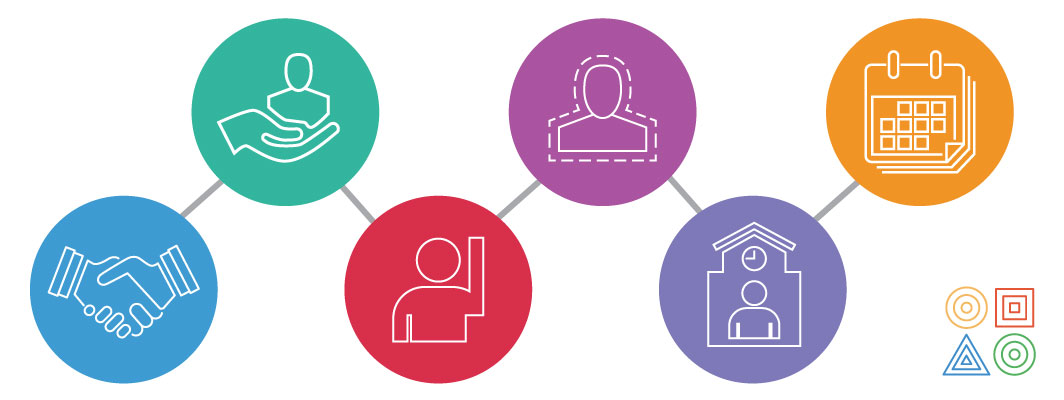
December 18, 2018 | By Jessica Schuler
Digital Promise’s Dynamic Learning Project (DLP), with generous support from Google, uses classroom based digital learning coaches to increase powerful and impactful use of technology as well as improve equity in 100 middle schools across the country.
The pilot year of the DLP helped us identify six core attributes of a successful coaching program:
When it comes to instructional coaching, it’s imperative that coaches and teachers form a strong, trusting partnership that includes collaborating to make decisions and find creative solutions.
“I never felt like it was [my coach] telling me what I should do; it was more [like] we were equals, just bouncing ideas off each other,” one DLP teacher said.
Just as students learn better when education is personalized, so do teachers. Instructional coaching provides support that is relevant to the teacher’s specific classroom, and effective coaches tailor their approach to meet each teacher’s unique needs.
“If you do a one-size-fits-all model for all teachers, that’s not necessarily going to address their strengths or weaknesses as a teacher,” one DLP teacher said. “The one-on-one aspect is, I think, the most important part, that you can address each teacher individually based on their strengths and their areas of growth.”
When teachers trust that their coaches are not judging them and will provide honest feedback, they feel safe experimenting and taking risks in the classroom. The non-evaluative relationship encourages teachers to collaborate openly with their coach.
“When [my coach] would be in my room working with me, I always felt so comfortable; I never felt judged,” one DLP teacher said. “Sometimes it is hard to have another teacher in your room while you’re teaching, but she never made me feel like that. She was always just extra help, [and] that made me feel more confident.”
Teachers who voluntarily choose to be coached are more likely to be invested in the process. During the pilot year of the DLP, participating teachers spent more time with their coach and used technology more frequently than teachers who weren’t part of the program.
As one teacher described, “After close to 20 years of teaching (…) having a coach and having the ability to do these different types of activities has re-energized my love for it.”
When the instructional coach is based within the school, he or she can provide support throughout the school day as needed. Teachers in the pilot year of the DLP valued this proximity when they struggled with a concept or tried something new in their classrooms.
“[My coach] said, ‘Hey, if you have a question just shoot me a text if you need me,’” said one DLP teacher. “So, I’ll have my phone in the drawer, I open it up, just text her, ‘Hey, I’m struggling with this,’ [and] she’ll come down right away.”
Consistent coaching over the course of the DLP’s eight-week cycle allows sufficient time for experimentation and relationship building. In the pilot year, teachers received an average of at least 19 hours of coaching support over the course of the school year. Additionally, teachers who participated in more than one cycle reported feeling more confident in their ability to use technology in more powerful ways.
“I think the beauty of the program is it can be at the teacher’s pace,” said one DLP coach. “It’s not a competition. If it takes us three weeks to get there, great, it takes us three weeks to get there. If we get there in two minutes, then we get there in two minutes.”
Meeting teachers where they are, providing personalized and consistent coaching, and giving them safe spaces to experiment all contribute to coaching programs that work. Ultimately, empathizing with the challenges and collaboratively designing and testing solutions of using edtech in the classroom can go a long way towards helping teachers adopt and execute successful strategies.
“In order to build the relationships, you need to have ‘street cred’ among the people you’re working with,” said one DLP instructional coach. “If they don’t feel like you’ve been in their shoes, it’s not going to work.”
If you are interested in participating in the Dynamic Learning Project, visit DynamicLearningProject.com.
By Sierra Noakes and AJ Foster
By Dr. Kyle Dunbar and Dr. Brian Troop